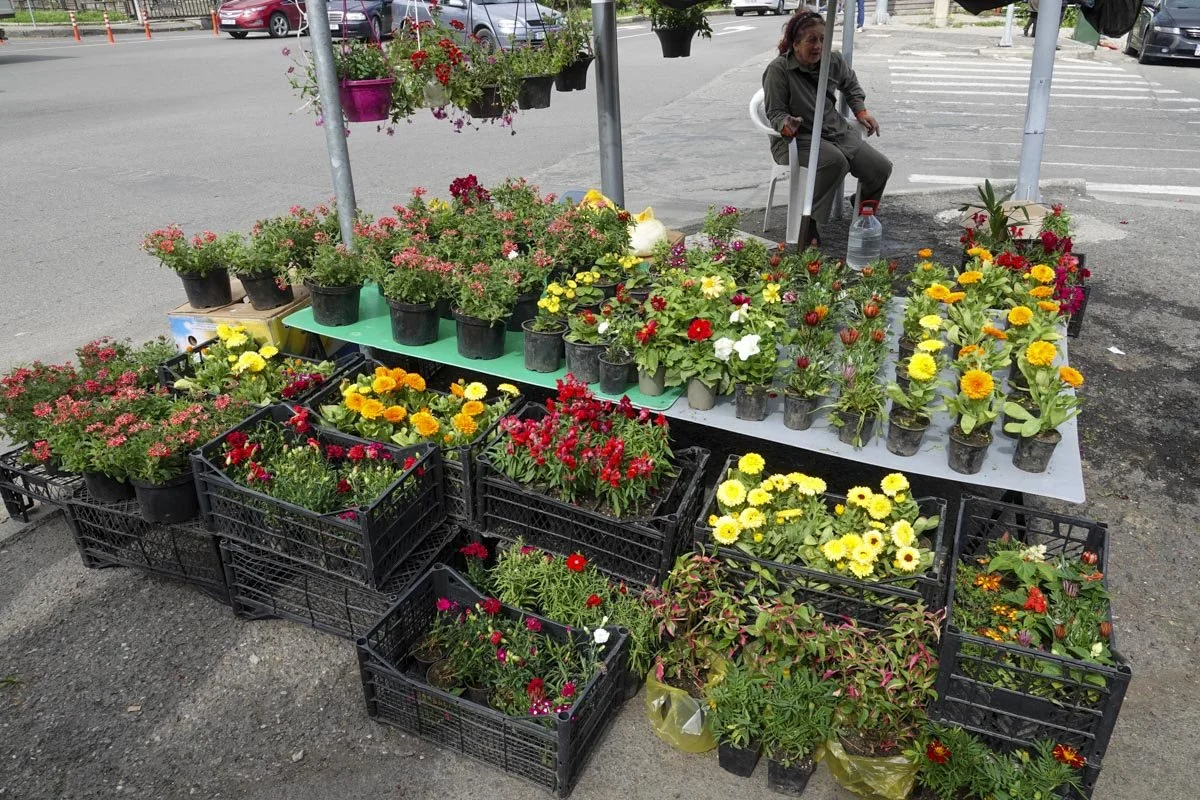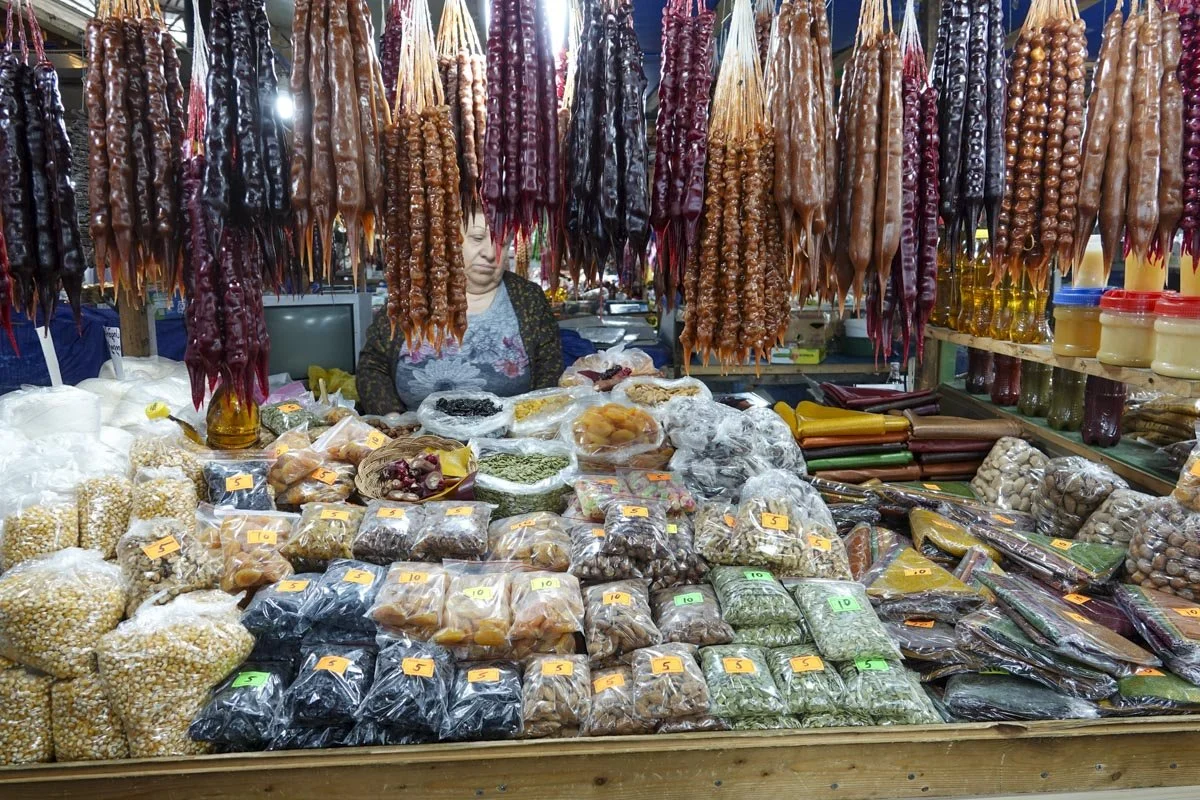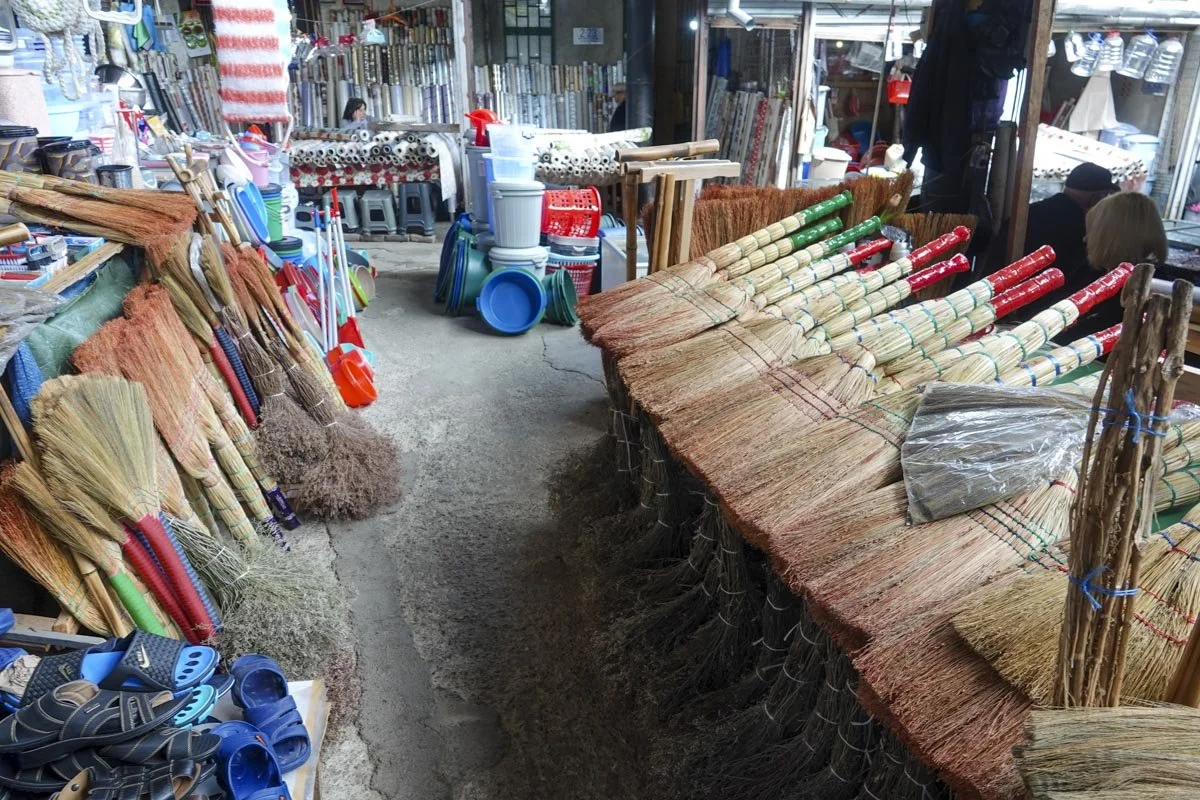Telavi Bazaar
We visited the Telavi Bazaar or Telavi Food Market. The market has been a cornerstone of cultural and culinary exchange since the 17th century. Our guide did tell us that this market is slowly dying due to all the supermarkets selling produce. I was saddened to hear that, but we enjoyed our visit here nonetheless.
The market was bustling and full of vibrant colors, rich aromas, and plenty of bickering over prices. From tangy pickles to silky sulgini cheese to sweet honeycomb to refreshing kiwi juice, this market had it all. And it especially had wine stalls, so there you go.
I love going to fresh markets and showing off all the fresh fruits and vegetables, and yes, this market had plenty of them. But I'm not going to show them. Nor am I going to show the wonderful dairy and cheese section or the meat and fresh fish sections. And as much as I was thrilled with the piles of potent cumin, you won't see that either.
I've decided to show what I would call the less common and the more Caucasus type items that I found in the market, so here we go. My first photo was at the corner intersection, just after we crossed the street to the market area. Now we've all seen people selling fresh flowers, but I almost always see them selling fresh cut flowers, especially by the roadside. This woman was selling fresh flowers that were all still growing in pots, so fresh live flowers.
Seeing garlic in a market like this is not unusual. But I found several places selling pickled garlic. I asked our guide about it and he said it's common in Georgia. He purchased some for us to try. It's like a pickle, sort of, but it was on the hot side, like very strong garlic.
Garlic isn't the only pickled thing that was for sale in the Telavi Bazaar, as you can see below.
The highlight of our market visit, or at least the area that we spent the most time, was at the fruit leathers area. They had what we normally see as dried fruits but then they had 'churchkhela' which is a traditional Georgian candy made from walnuts and grape juice. This product dominated the sweet stalls. They had fruit leathers made from grapes, plums, pears, apples, and kiwis. The churchkhela are the ones hanging in the top area. The more traditional dried fruits are down below.
The next photo will better show how the churchkhela are made. They string walnuts on a string. Then they cook the fruit juice, adding flour to it, (and maybe other stuff), and as it's cooling, they dip the walnut covered string into it, like a candle. We tried many versions and they were all good.
Mushrooms aren't one of the most common items in these markets, but this market had plenty of mushrooms for sale.
My last photo might seem unusual too. It was a section of brooms. Why would I include this, you ask? Simple. These Caucasus countries were probably the cleanest countries that we've ever visited. It was rare to find a piece of litter or garbage anywhere. And when we saw people cleaning up the streets, these were the brooms that they were all using to sweep up.







